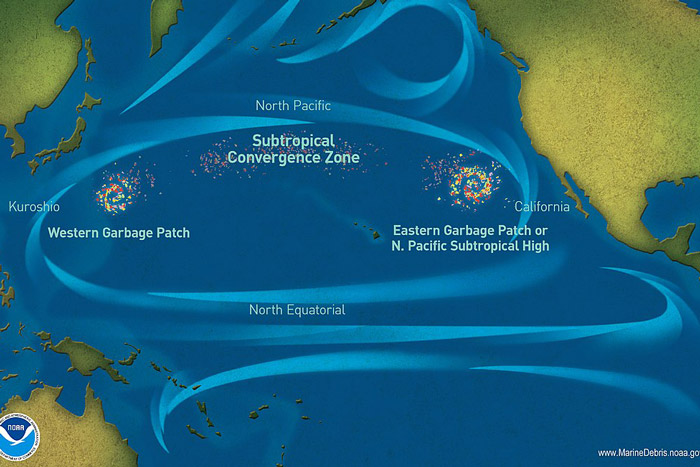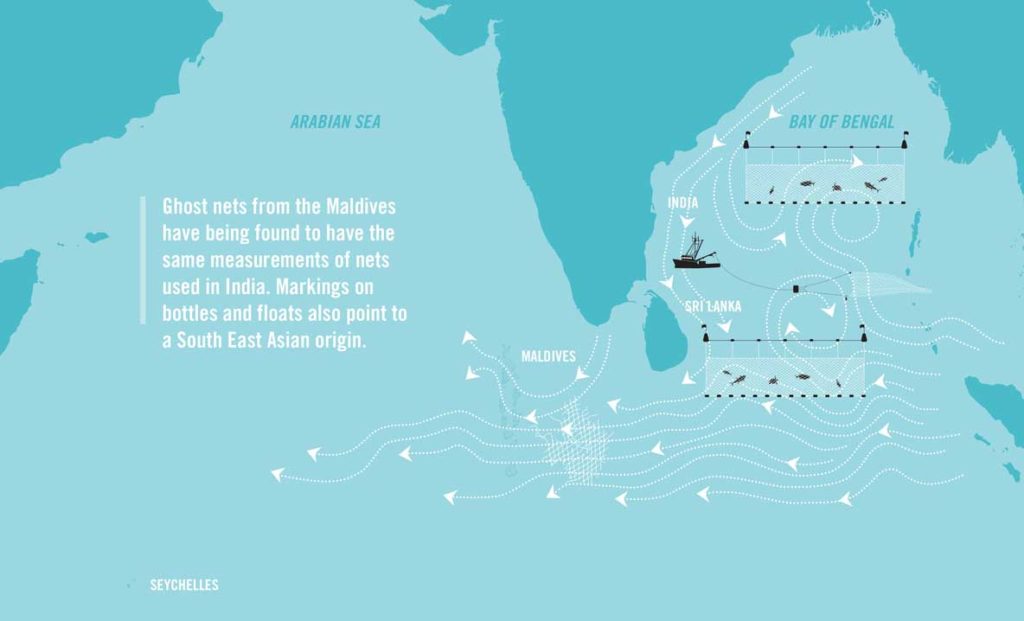Ghost gear can occur in any environment where fishing takes place but is not restricted to these areas. Ocean currents can cause ghost gear to drift far from its origin. As such, it can be found in all marine habitats around the world from coral reefs hundreds of thousands of miles away from their point of origin, to the deep sea at over 3,000m below the surface.

Ghost gear can also accumulate in certain areas. Many plastics, for example, accumulate in oceanic gyres. A study of the famous ‘Great Pacific Garbage Patch’ demonstrated that ghost nets alone represent 46% of the 79,000 tonnes of plastic observed.

Moreover, some nations are particularly susceptible to the effects of ghost gear. For example, the geography of atolls and outer reefs in the Maldives (which draw a perpendicular line across the direction of ocean currents) often means that they act as traps for floating debris, thus compromising the sustainability of their local pole and line fishing techniques.
References
- Lebreton, L., Slat, B., Ferrari, F., Sainte-Rose, B., Aitken, J., Marthouse, R., Hajbane, S., Cunsolo, S., Schwarz, A., Levivier, A. and Noble, K., 2018. Evidence that the Great Pacific Garbage Patch is rapidly accumulating plastic. Scientific reports, 8(1), pp.1-15.Vieira,
- R.P., Raposo, I.P., Sobral, P., Gonçalves, J.M., Bell, K.L. and Cunha, M.R., 2015. Lost fishing gear and litter at Gorringe Bank (NE Atlantic). Journal of sea research, 100, pp.91-98.
- Stelfox, M.R., 2021. The cryptic and transboundary nature of ghost gear in the Maldivian Archipelago. University of Derby (United Kingdom).

